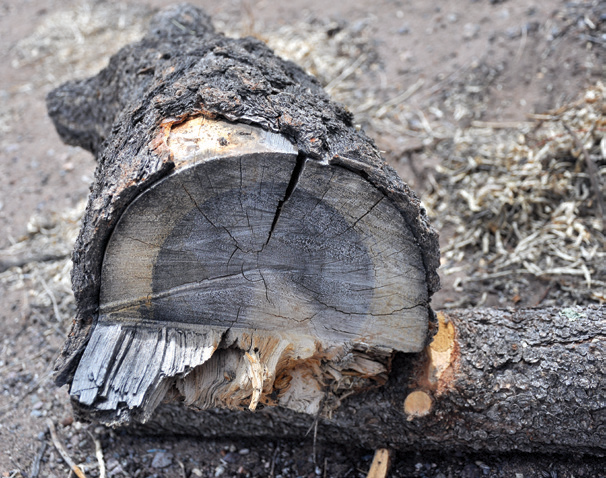Piñon Ips Bark Beetle Treatment Tips
Seasonal beetle activity
As temperatures warm across the state, it’s critical to keep an eye for beetle activity and stressed trees that may be vulnerable to attack. This beetle population thrives in warm and dry spells that stress trees. Stressed trees become more susceptible to infestation as they struggle to defend themselves. This creates a cycle of more stressed trees and larger beetle populations, ultimately resulting in widespread tree mortality.
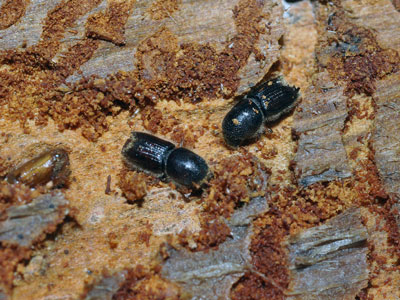
Signs of infestation
Piñon Ips beetle activity begins when daytime temperatures are consistently above 50 degrees and ends when daytime temperatures are consistently below 50 degrees.
To keep an eye on potential risk of piñon Ips attack, look for the following signs in trees:
- Fading needles that turn to a straw color, then red and brown as the tree dies
- Pitch tubes are small clumps of sap that indicate the tree has tried to drown beetles as they bore into the tree
- Entry and exit holes indicate that beetles have been active in the tree
- Galleries are tunnel-like routes created by beetles boring underneath the bark
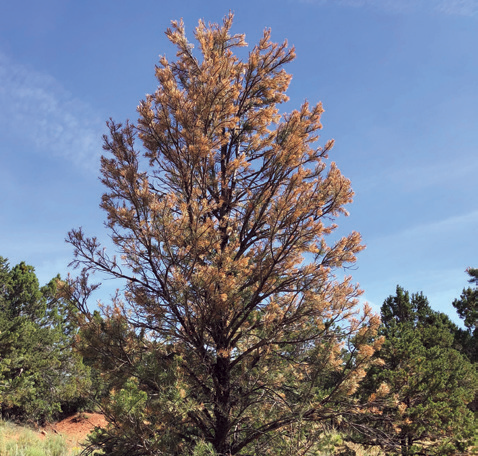
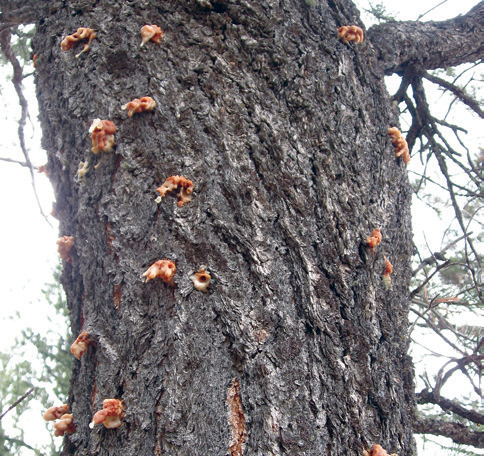
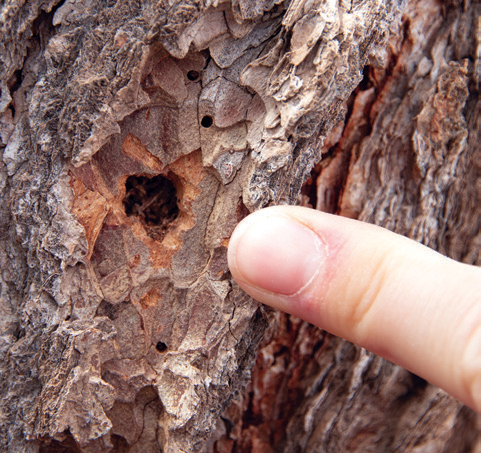

Treatment and prevention
The Piñon Ips Bark Beetle Quick Guide outlines treatment and prevention tips to help your piñon trees survive when piñon Ips populations are high.
- Remove trees infested with piñon Ips as soon they are identified
- Water trees in periods of drought throughout the year
- Spray trees with a preventative chemical at least two times per year
Piñon Ips Bark Beetle Quick Guide
Handling infested wood
But the problem extends beyond stressed trees — piñon Ips beetles can also reproduce in fresh, green wood or leftover firewood larger than an inch in diameter. Proper wood storage is vital in mitigating the spread of these beetles. Homeowners and landowners can make a difference by following recommended practices to control the beetle population and minimize outbreaks.
Piñon Ips beetles do not damage the wood inside a tree; it can still be used for lumber, firewood or other products once it has dried out. If bark is splitting or cracking, the wood is dry and safe to use.
There are six ways to handle infested wood:
- Grind or chip logs and slash to destroy the larvae and dry the material
- Split and scatter, don’t stack wood larger than 4 inches in diameter
- Transport green material to a site at least 1 mile away from any piñon trees
- Burn infested or green material, if possible and safe to do so
- Bury the material more than 8 inches in the soil
- Debark large logs to expose beetles to the elements
